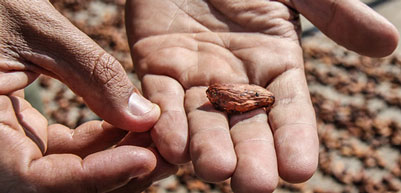Ecuador chocolate line to use high quality Arriba cocoa
- Like
- Digg
- Del
- Tumblr
- VKontakte
- Buffer
- Love This
- Odnoklassniki
- Meneame
- Blogger
- Amazon
- Yahoo Mail
- Gmail
- AOL
- Newsvine
- HackerNews
- Evernote
- MySpace
- Mail.ru
- Viadeo
- Line
- Comments
- Yummly
- SMS
- Viber
- Telegram
- Subscribe
- Skype
- Facebook Messenger
- Kakao
- LiveJournal
- Yammer
- Edgar
- Fintel
- Mix
- Instapaper
- Copy Link
Posted: 27 June 2014 | Nestlé | No comments yet
Nestlé has unveiled a new chocolate moulding and packing line in Ecuador which will use the country’s prized Arriba cocoa beans…


Nestlé has unveiled a new chocolate moulding and packing line in Ecuador which will use the country’s prized Arriba cocoa beans to make value-added chocolates for export and domestic consumption.


“I am proud to say that Nestlé Ecuador is the biggest buyer and exporter of Ecuadorian cocoa.”
The new facility, at Nestlé’s factory in Guayaquil, was officially inaugurated by Nestlé’s CEO Paul Bulcke in the presence of the country’s Vice-President, Jorge Glas.
The Italian-made machine uses the latest technology to produce and package high-quality boxed chocolates, such as bars with different fillings and aerated chocolate. It also has low power consumption so it has a reduced impact on the environment.
“This new facility will optimise the production of Ecuadorian chocolate, increase exports across the continent and generate new jobs,” explained Mr Bulcke. “Nestlé has invested over USD16 million in machinery for local chocolate production in Ecuador.”
“We are committed to increasing our presence in the country, developing the local workforce and promoting Ecuador’s domestic output. I am proud to say that Nestlé Ecuador is the biggest buyer and exporter of Ecuadorian cocoa.”
He added that the investment would help the country move up the value chain, producing a sophisticated chocolate product with considerably more value than simple cocoa or tablets of chocolate.
Some 60% of Ecuador’s prized Arriba cocoa is produced on family farms. Nestlé’s Cocoa Plan aims to improve the quality of life for these small-scale farmers, buying directly from them and providing technical assistance and high-yielding plantlets. In Ecuador, some 2,400 cocoa families have already benefited from being part of the scheme.




